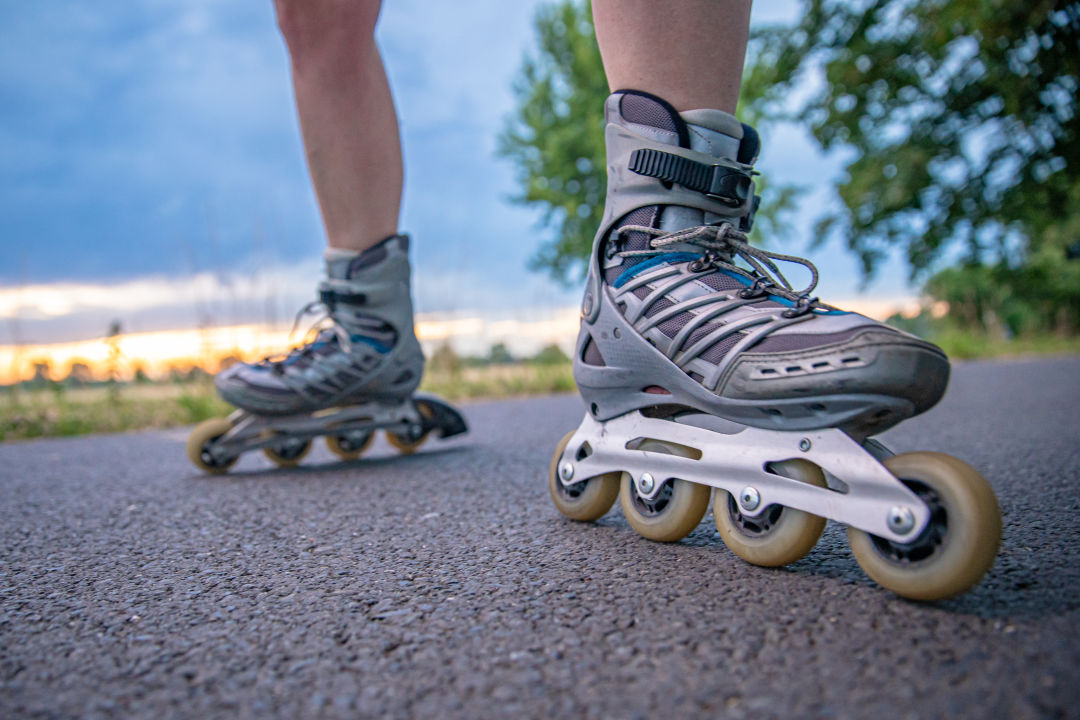
Aside from aesthetics, which is completely subjective, choosing inline skates is based on a variety of objective criteria that vary depending on the situation, such as the practice, use intensity, skating level, and budget. What should impact your buying decision? explains…
To choose the finest rollerskates, first realize that each kind of practice requires a distinct model. Due to the diametrically opposed characteristics of the skates, finding a pair that is suitable for different activities may be challenging.
Are you a beginner unsure if rollerblading is for you? Rent rollerblades or borrow friends’!
We always find the best roller skating technique by experimenting! Some specialized roller shops will even reimburse rental fees if you buy a pair.
The initial expenses are typically painful, stiff, and limited in movement. Rollerblading enthusiasts should avoid this https://gorollerblades.com/best-four-roller-skates-for-girls/. Opt for a pair that is more inexpensive, more comfortable, and allows you to grow without having to buy them every few months.
No online sales site, but a database of roller skates, may give you an idea of the product diversity available.
A “good” skate for a beginner costs 100-200 euros.
If you’re on a budget, consider used skates.
To save money and engage in several skating disciplines, always choose the model that best suits your main use. Roller skating is an endless sport. Your technical skills will improve as your horizons grow!
Hard shells are popular among new skaters because to their cheap manufacturing costs. They are less comfortable than “soft” shoes, which allow cyclists to ride longer without foot discomfort. Rigid hulls, on the other hand, are better suited to skating disciplines including downhill, freeride, street, and slalom.
Depending on the activity, roller skating shoes and hulls vary in size and shape.
Each brand has a unique foot form and length. Your usual shoe size is just a suggestion. Above everything, trust your gut. You’ll feel claustrophobic in one brand and overly large in another.
Exercising the foot may lead it to grow. Buffered skates are excellent.
During the test, go around the store for 15 minutes on inline skates.
Long-distance journeys benefit from a larger skate. For technical activities like slalom, hockey, or speed skating, you’ll want to keep your skate close to your foot.
An adjustable skate is perfect for kids. It costs more initially, but the child will use the skate for a longer length of time and be more comfortable. Assuming the skate isn’t customisable, go up one size. The tough shell supports the feet while allowing for growth. While a sole may offer support, don’t overdo it to risk losing sensation.
Choosing roller skates for your child is easy.
Roller-skates
For long quiet rides, skates must be comfortable and light.
Important technological information
Flexible shoe (often in canvas with plastic or composite structure)
Medium-large (80-110 mm) wheels with good suppleness (78 to 84A)
Aluminum composite or medium plates (260 to 300 mm)
Bearings are rated from 3 to 9 ABEC.
If you think roller-touring will become a distinct pastime,
Skates with 100 mm wheels are available, although they are higher and therefore less stable. They will enhance driving and sliding on damaged terrain.
Street skates are designed to withstand shocks and friction from rails and low obstacles. They are also more resistant to drops. The locations are accommodated by notches in the plate and hull.
Until K2, stiff (occasionally soft/hard).
UFS plastic plates are thin (56-72 mm) and robust. Small (56-72 mm) and stiff wheels (88 to 100A). Antirockers are small center wheels to prevent (42-47 mm).
Sufficient bearings would be 3 to 7.
H-blocks may be configured as H-blocks, grooves, grindplates, or soulplates.
Aggressive roller frames come in many forms and sizes gorollerblades.
A ramp or skatepark’s flat component (4 flat wheels)
a spontaneous gathering (2 wheels at the ends)
Skatepark anti-rocker assembly (two tiny wheels in the middle and two bigger wheels at the ends to avoid hitting the walls)
Skating or rollerblading?
Speed skates come in a range of types, all intended to perform. Their low, strong hull and long, rigid frame help transmit energy. Lightweight construction is essential for optimal performance. The larger wheels help roll and sustain speed.
Remember to start roller skating only once you’ve mastered the fundamentals. Technique and a toned ankle are required for low-heeled skating. First, practice speed skating with sport hiking skates, especially because speed skating skates may be expensive!
Low-stiffness no-lining carbon or composite shoe
Long aluminum or carbon fiber frames with large wheels
Big rims (100 to 125 mm)
Medium hardness (82A indoors or in the rain up to 88A on smooth and rolling concrete or bitumen)
Ceramic and microbearings with ABEC 5 or higher are also available.
Progress in technology
Roller skates featured five wheels ranging in diameter from 76 to 90 mm until around 2003. The most common layouts are 4100 and 4110 mm. The 3 125mm has been available since 2015. Children’s racing skate wheels may be smaller.
To help you limit your choices, we recommend reading the following articles:
How to Choose the Right Tempo is a guide on how to choose the right pace. Skates having a diameter of 4100-3125 mm: What is your ideal roller configuration?
Long distance, endurance, and raid skates feature larger wheels than touring skates to cover longer distances and tough terrain. Their shells are stronger, lower, and lighter. These look like racing skates but are more comfy.
Important technological information
Composite or carbon fiber sole with semi-flexible liner.
The design is smaller than a touring skate but larger than a roller racer (with an extra cuff)
aluminuim or carbon 3-4 cars with medium-large wheels
Big rims (100 to 125 mm) a challenge (82 to 86A)
Micro bearings come in standard and ABEC versions. 5–9 years old
Play or pressure regions on your endurance skates’ shoe
How to Choose the Best Long-Distance Skates